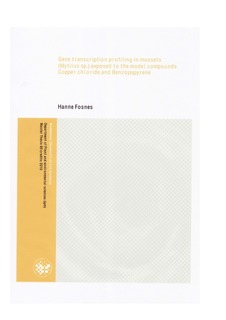| dc.description.abstract | Abstract
Environmental pollution is increasing in coastal areas and is responsible for adverse
health effects in marine wild life. The oceans are vast and the sources of pollution are
many, which make the effects of pollution difficult to assess in a reliable and valid
way. Different toxic components have different mode of actions, leading to series of
responses in organism. The first early responses to a toxicant, in most cases a system
at the molecular level designed to target the specific toxicant, is important to identify.
A series of biological marker (biomarker) analyses have thus been developed to
assess the effects of exposure to single chemicals (metals and organic compounds)
and complex pollution discharges. Single biomarkers are useful as indicators of the
presence pollution as they reflect biochemical and physiological changes, but they
may not necessary predict the effects on the whole organism. Several mussel species
in the genus Mytilus has frequently been used to assess chemical pollution in the
aquatic environment and with the availability of high-content molecular methods such
as microarrays, makes this group of species highly interesting for use in toxicity
assessment and environmental monitoring. The aim of this project was to evaluate the
performance of a newly developed high-content Mytilus sp. oligonucleotide array
(oligoarray) and to specifically assess the transcriptional effects in M. edulis digestive
organ after exposure to the fundamentally different pollutants Copper chloride
(CuCl2) and the Polycyclic Aromatic Hydrocarbon (PAH) Benzo[a]pyrene (BaP).
The results showed that an oligoarray based on M. edilus and M. galloprovinciales
could be used to study the differential expression in M. edulis digestive gland after
exposure to Cu and BaP. There were also indentified different MoA for Cu and BaP,
as well as several genes and pathways related to general stress responses of toxicity
for both compounds. Further work on the development of the array includes inclusion
of additional sequence information from other sequencing projects, redundancy
reduction and further verification of the microarray results by Real Time quantitative
Polymerase Chain Reaction (RT-qPCR) to assess the dynamic range and sequence
specificity of the array.
Keywords: Pollution, Environmental monitoring, biomarkers, common mussel
(Mytilus sp.), BaP, Cu, microarray, gene expression. | en_US |
